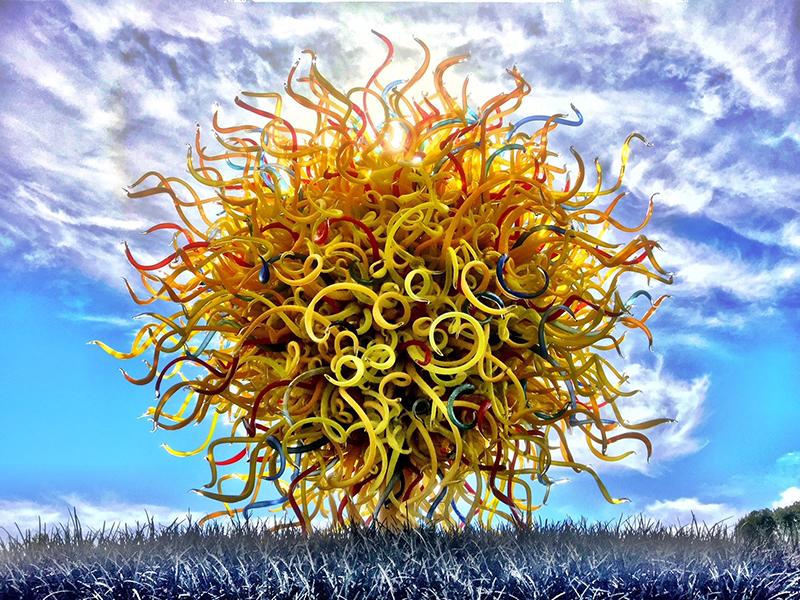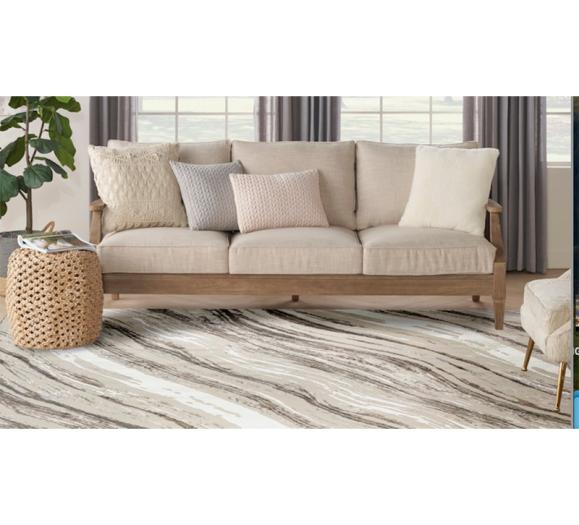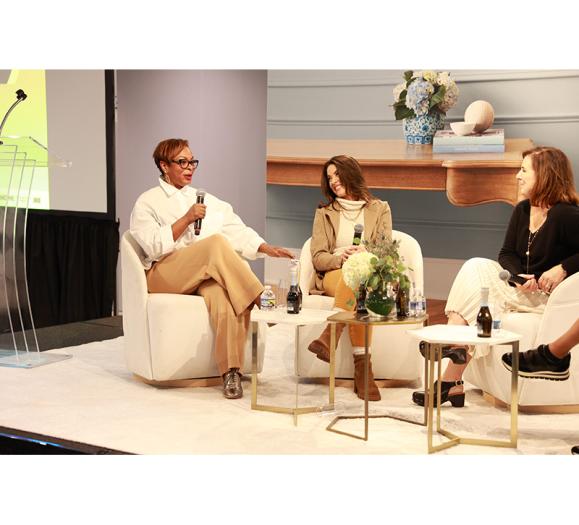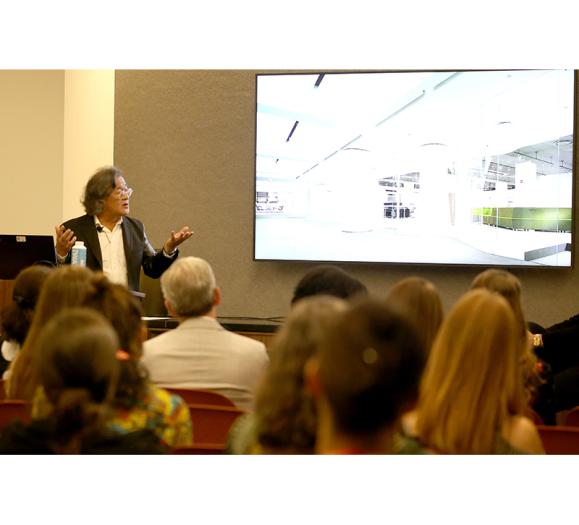I was lucky enough to visit the Dale Chihuly Garden and Glass Museum in Seattle. His large-scale sculptures have always intrigued me. Part of it is the way light interacts with blown glass, making it appear to glow from within.
Dale Chihuly was born in 1941 in Tacoma, WA. He started his studies at the University of Washington, then transferred to the University of Wisconsin, where they had the first glass program in the country. He further continued his studies at the Rhode Island School of Design and established a glass program, where he taught for more than a decade. Later on in his career, he received a Fulbright Fellowship and worked at the Vanini Glass Factory in Venice. There he learned about the team approach to blowing glass, which was not a common practice used in the United States at the time.
His pieces are not created as a solo artist. It is an ever-changing group of artisans, who make his visions a reality as he oversees their creation. Often it is eight or 10 people working together. He once said in an interview, “The more I worked, the more I sold work, the more people I could hire."
His approach is not without controversy. At the age of 75 (he is now 82), he was faced with a court battle that put into question the idea of shared credit and commensurate compensation. In his countersuit, Dale Chihuly, said that his vision “defines and shapes all the art that leaves his studio.”
He certainly established formed glass as fine art. His pieces are included in more than 200 museum collections around the world. He likes to place his glass sculptures in natural settings, which he has done in many outdoor installations all over the world. He continues that theme at the museum. Half of his pieces are outside, tucked into the plantings and greenery.
Both the interior pieces and the exterior pieces interact with artificial and natural light. They feel energized. They almost feel alive.
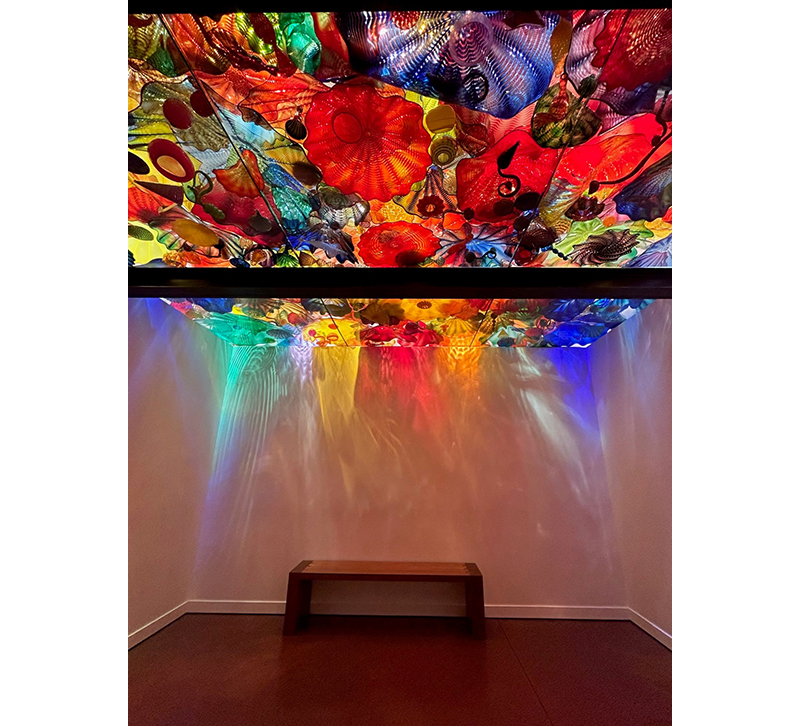
The first thing you encounter as you enter the museum is this anteroom with a luminous ceiling. It is filled with the Chihuly flora-form vessels. They are backlit with directional LED fixtures that cause the colored light to wash onto the walls below. It is a very transformative experience.

You walk from this room of saturated color into a room that is almost devoid of color. You see these icy spikes of white glass against a black background. They feel like snowflakes from some other planet, or stars that have been frozen in place. 4000° kelvin directional fixtures keep the color of frosty white. It is like a visual sorbet that lets your eyes rest before moving on.
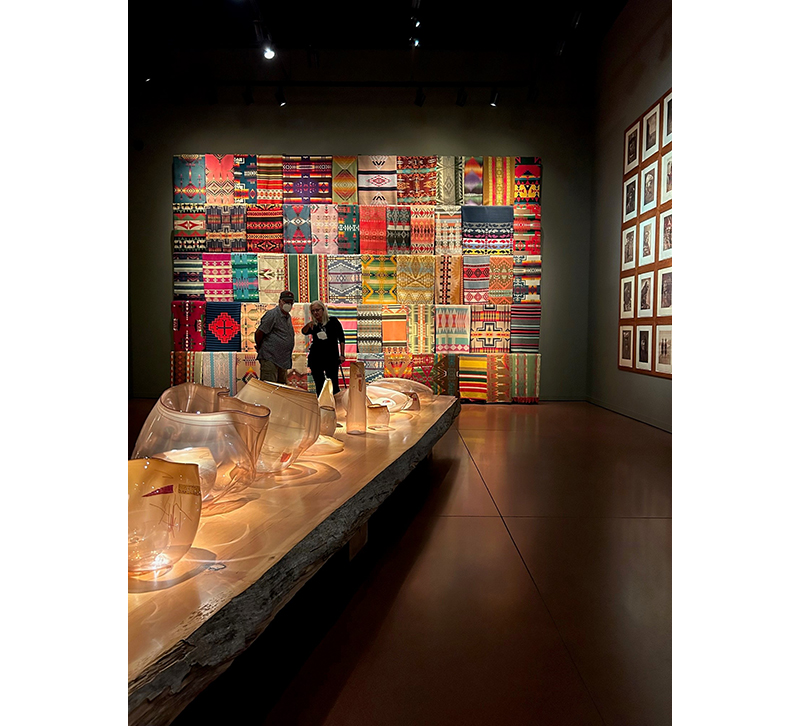
The next gallery features a long low wooden table, filled with translucent vessels. They feel almost alive, like sea creatures. Each one is hit with a spotlight from above, so that the light strikes the center of the vessel, and then spreads out through the shallow walls to create a pattern on the tabletop.
On the walls, you see boldly patterned fabric made by indigenous people that have influenced this particular series of Chihuly’s work. On the adjoining wall are vintage photographs of the tribespeople who settled in the Seattle area.
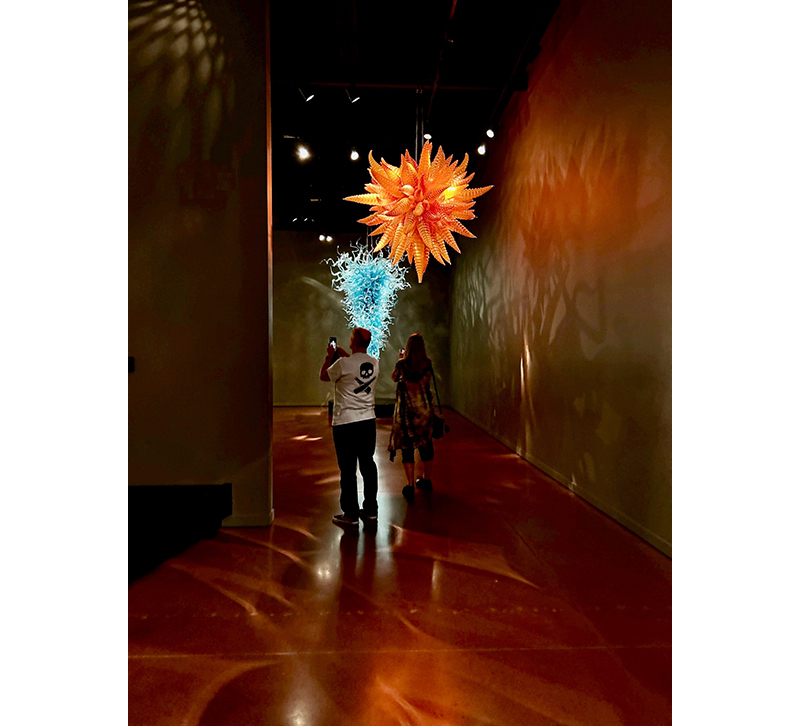
Here you see two people entering the next viewing space where huge sculptures are suspended from the ceiling. A perimeter run of 3000° kelvin track heads project light on to these pieces. They seem to capture the light and then emit it. It feels quite extraordinary.
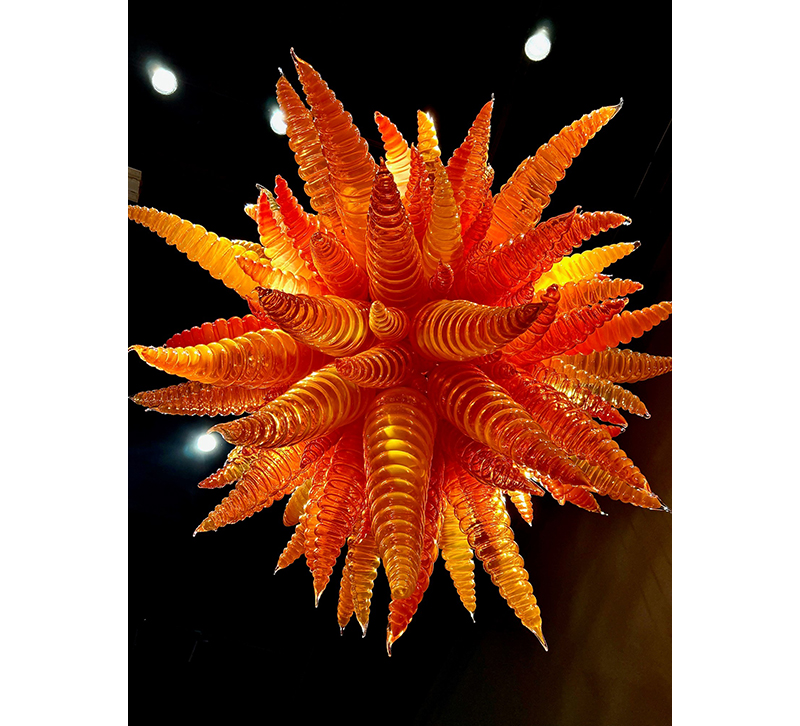
A closer look at the suspended orange sculpture shows how the light reacts to the various horn-shaped arms. Depending on the color and the thickness of the glass, the light adds to the dimensionality and liveliness of the peace.
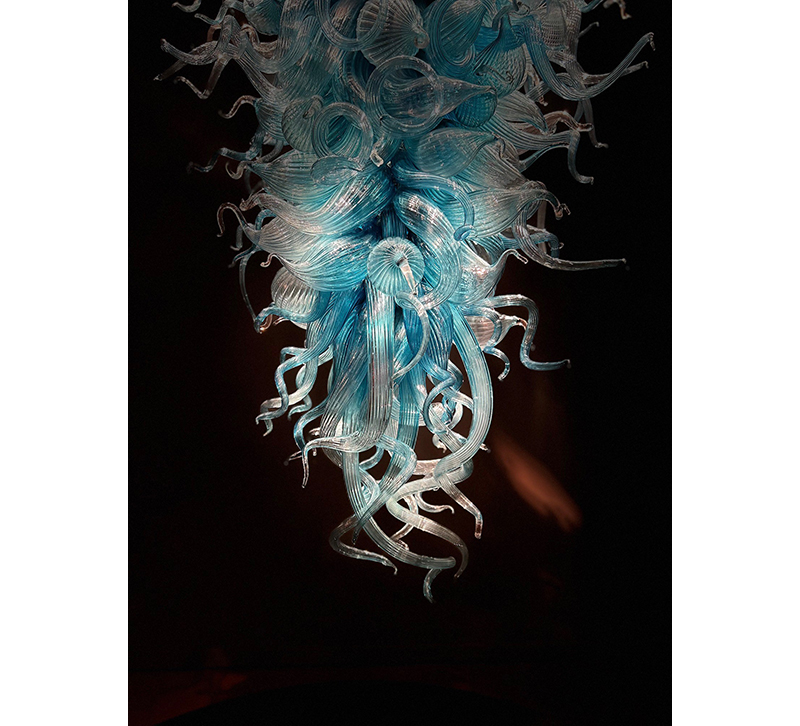
This aqua blue and white piece feels like the underside of an overscaled jellyfish. The tentacles appear to be reaching out into the darkness. Using a 4000° Kelvin LED source keeps the blue from shifting into green and the white from turning yellow.
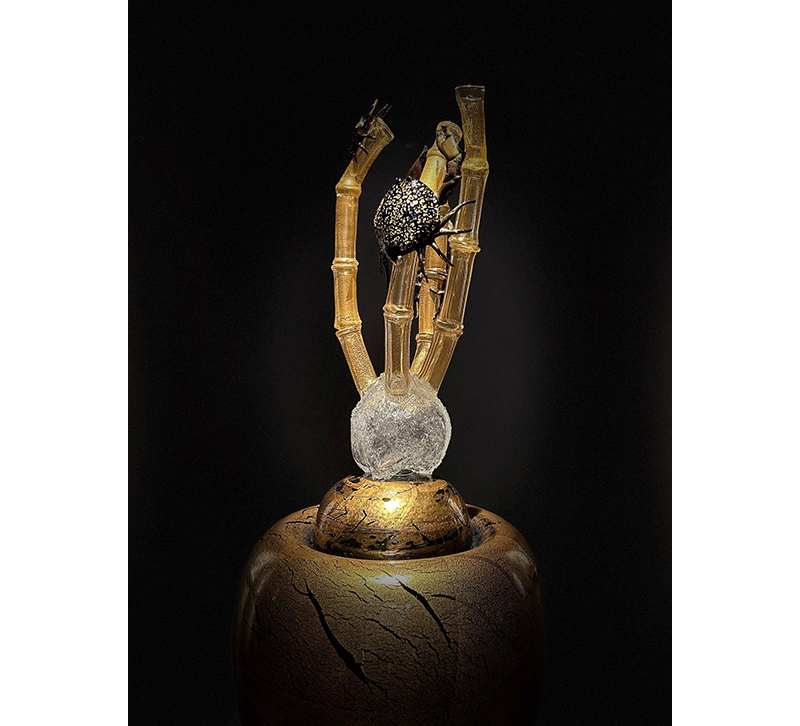
There are also a sumptuous series of formed glass tabletop sculptures. This one feels like translucent bamboo, which is the home of spider-like creatures. Tightly focused lighting, projected from above, illuminates the piece. Making it visually pop in the darkened environment.
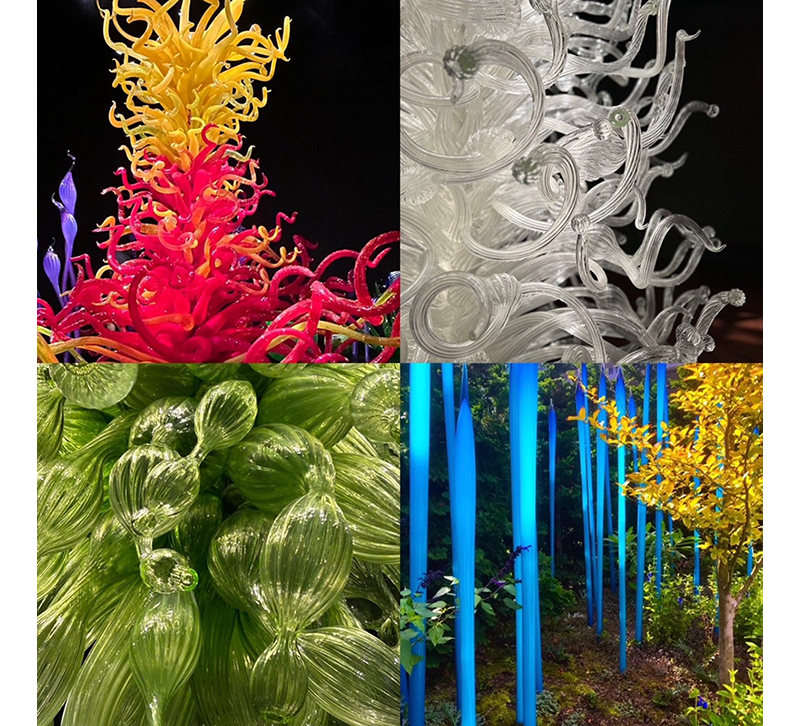
This last image is a mosaic featuring other pieces from the exhibit, both interior and exterior. It is definitely a feast for the eyes.
*All images courtesy of Randall Whitehead.



